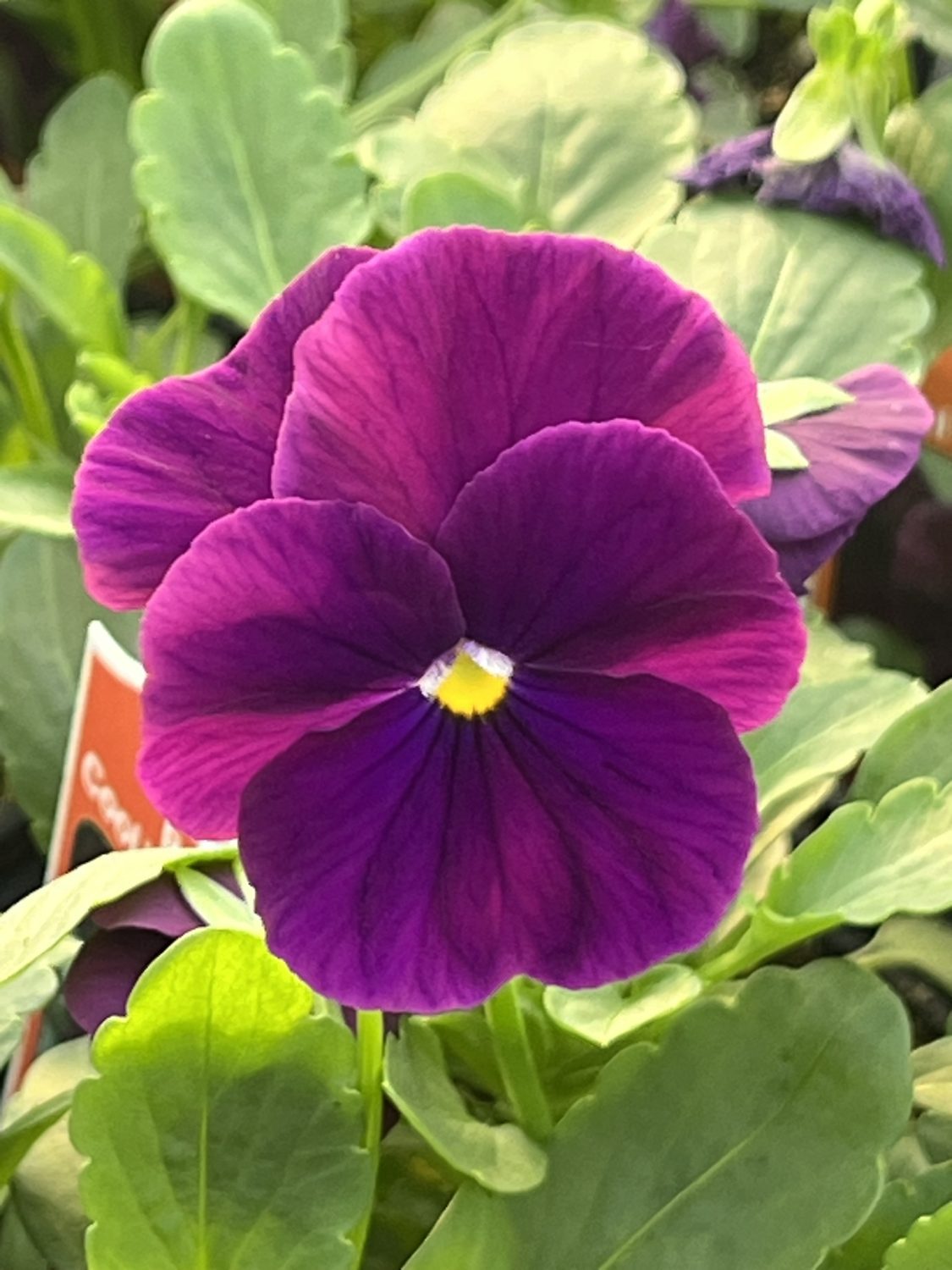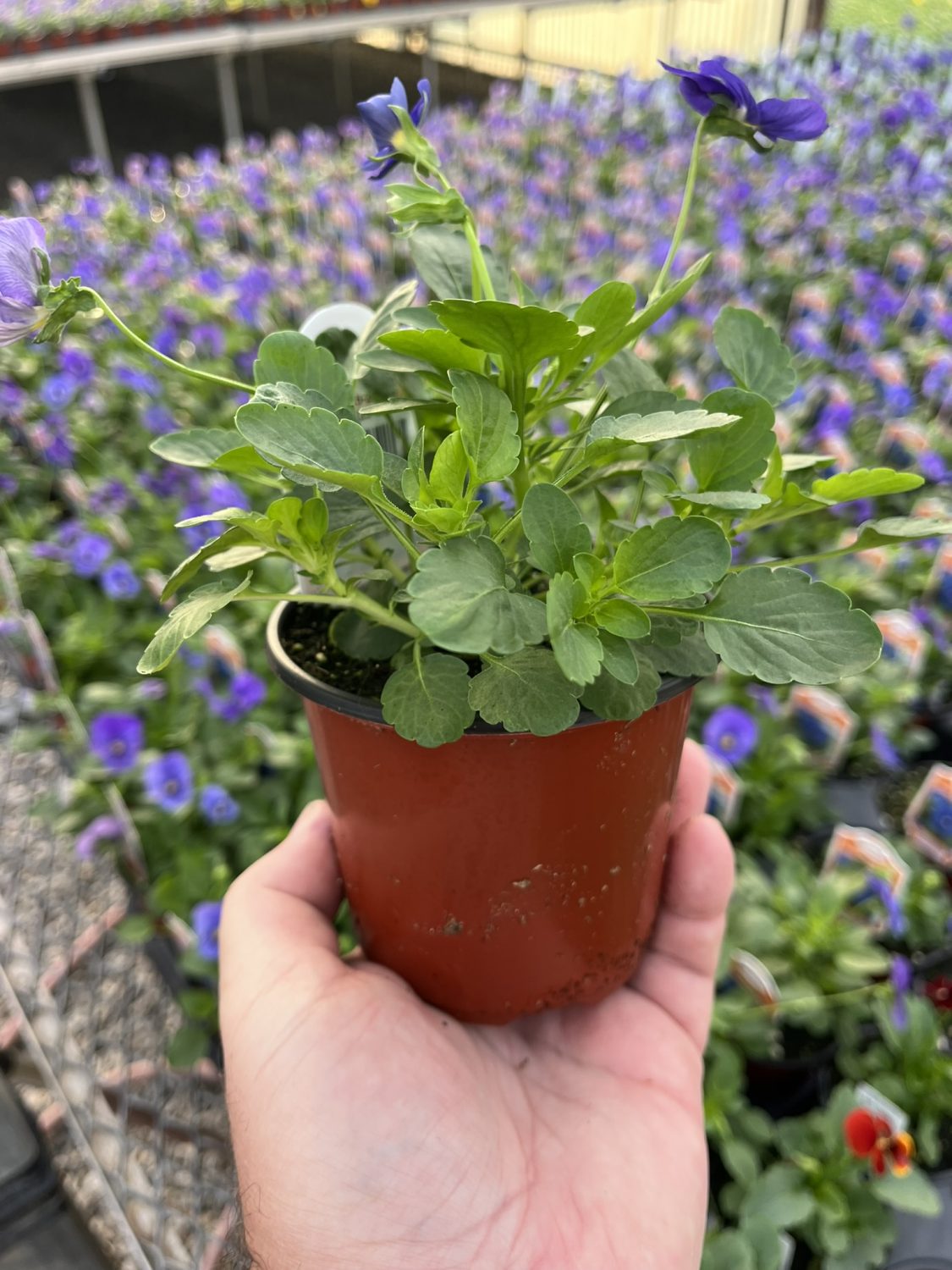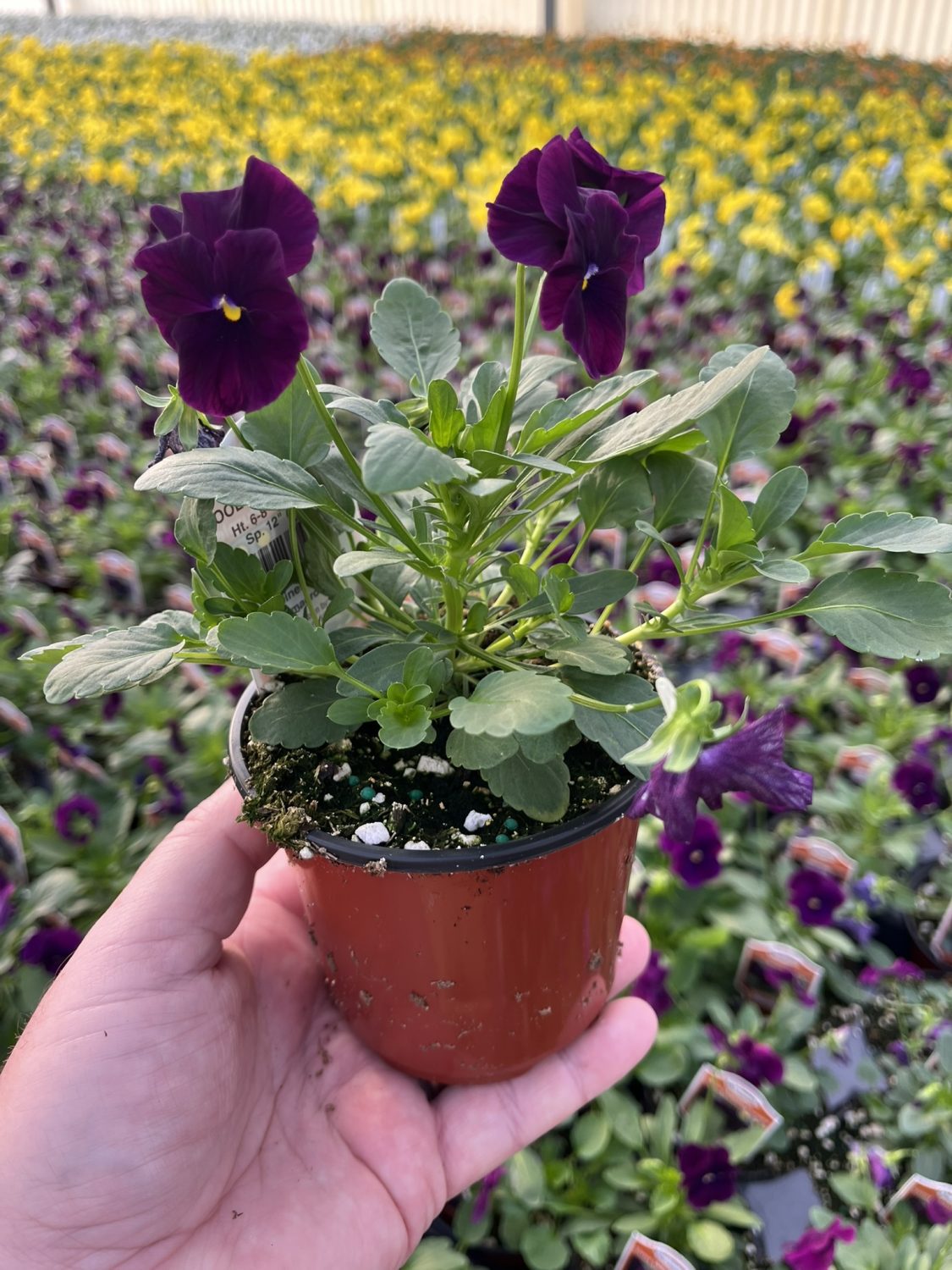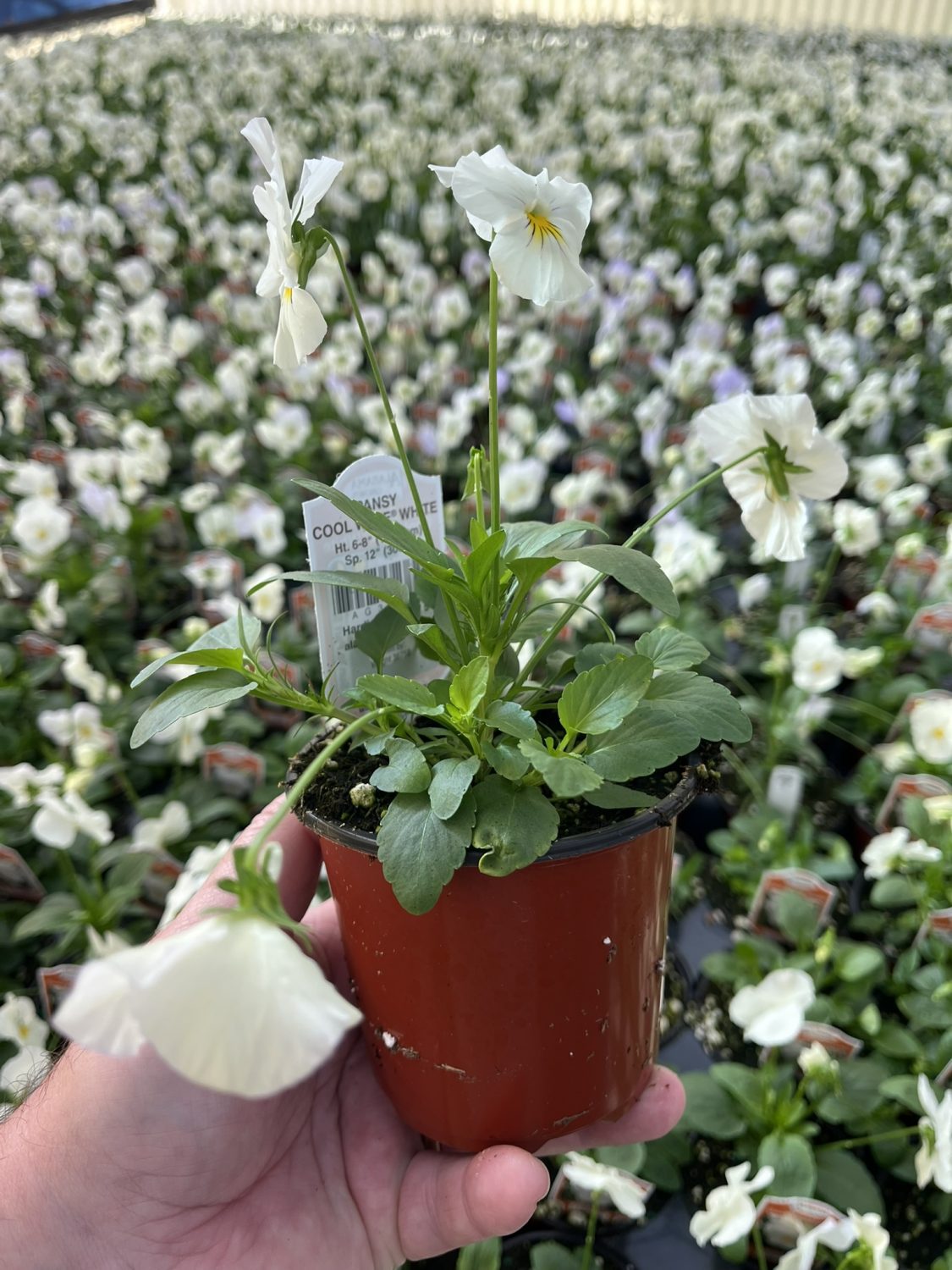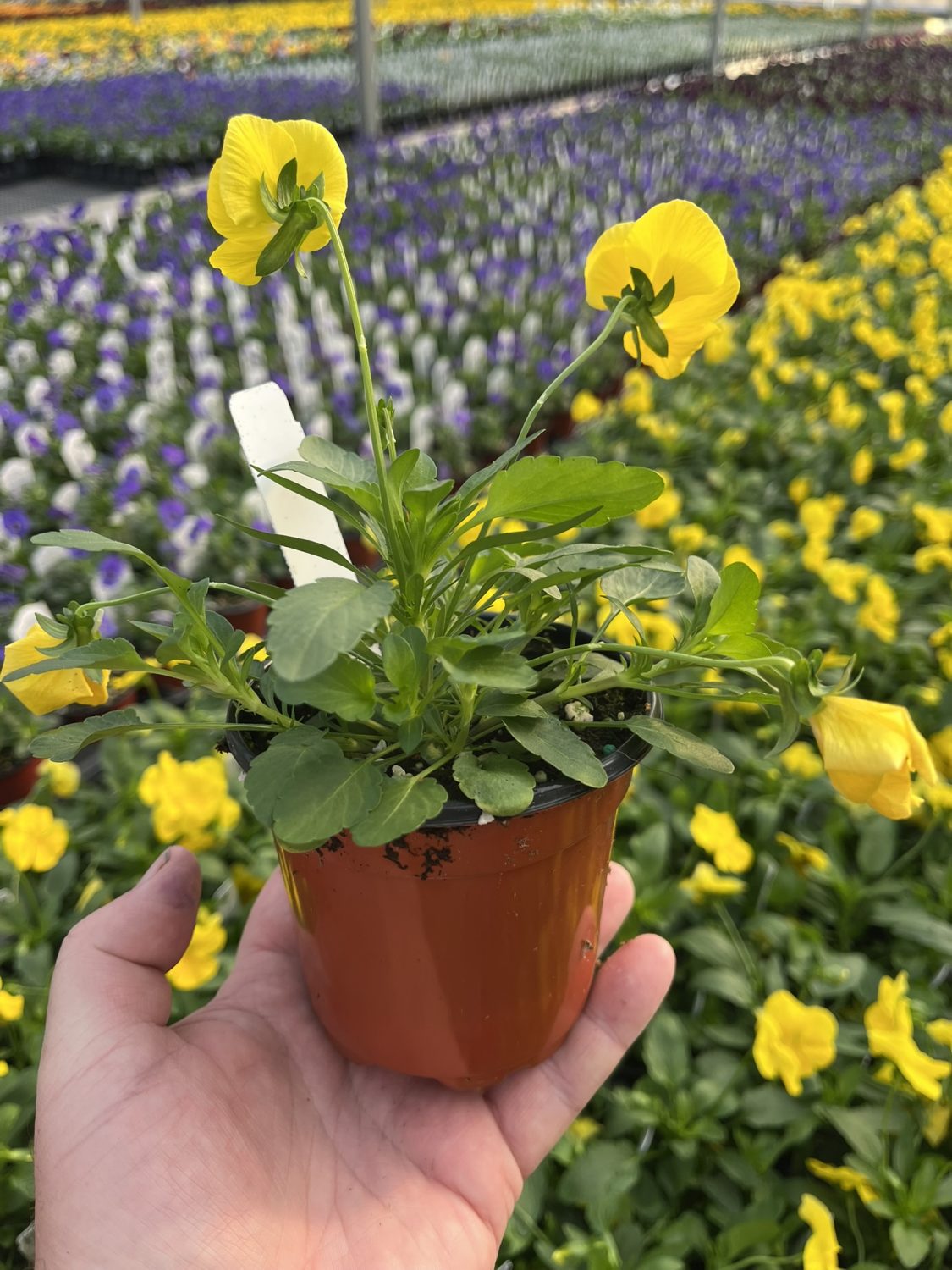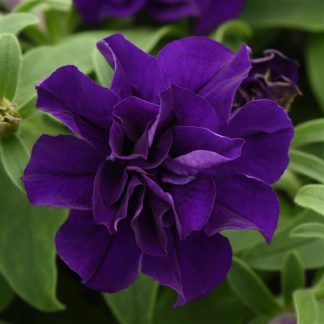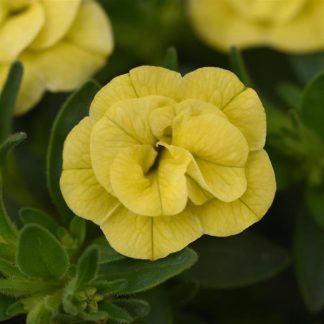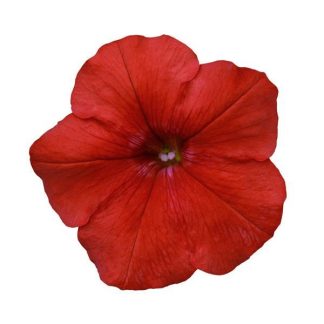Description
Pansy ‘Cool Wave Purple’ — Trailing Purple Waves for Baskets, Beds, and Big Style
Want color that spills, spreads, and shines? Pansy ‘Cool Wave Purple’ delivers. This vigorous, trailing pansy covers ground, cascades from baskets, and keeps blooming in cool weather. The petals glow in rich purple with a sunny eye. The habit is full and flowing. The look reads from the curb. In other words, you get waves of purple with very little work.
Below, we’ll share what makes ‘Cool Wave Purple’ special, how to plant it, and easy care for months of bloom. We keep the steps simple. We keep the tone friendly. And we focus on wins you can see—at your front door, along your paths, and in every hanging basket.
Why We Love ‘Cool Wave Purple’
- True trailing habit. Not just mounded—spreading. Plants spill and fill, turning small spots into big color.
- Fast coverage. Runners knit together quickly, so beds look finished in weeks.
- Long cool-season bloom. Fall through spring in many regions; spring into early summer in cooler zones.
- Weather ready. Bounces back after cold snaps and wind better than standard pansies.
- Effortless style. Perfect for baskets, bowls, window boxes, rock walls, and front-of-border groundcover.
But most of all, the purple is clean and saturated. It pops on gray days. It glows at dusk. It pairs with almost every neighbor. We plant it once. We enjoy it for months.
Plant Profile at a Glance
Type: Trailing pansy (Viola × wittrockiana)
Habit: Spreading, cascading, vigorous
Height: 6–8 inches
Spread/Trail: 24–30 inches when happy
Bloom size: About 1½–2 inches across
Fragrance: Light and sweet on warm afternoons
Bloom window: Heaviest in cool weather; strongest in early spring and fall
Instead of sitting still, ‘Cool Wave Purple’ reaches out. Runners branch and root at the nodes in loose soil. After more than a few weeks, your bed reads like a soft, purple carpet.
Where ‘Cool Wave Purple’ Thrives
Light: Full sun to part sun in cool seasons. In warm zones, choose morning sun with afternoon shade.
Soil: Loose, well-drained, and rich in organic matter.
Water: Keep evenly moist. Let the top inch dry slightly between waterings.
pH: Neutral to slightly acidic is ideal.
Trailing pansies love cool roots. A one-inch mulch helps steady temperature and moisture. Instead of fighting dry patches, you give plants an easy home for constant bloom.
Best Planting Windows by Region
- Cool/Cold zones (3–6): Plant in early spring as soon as soil can be worked. Fall planting is possible if you protect fresh transplants before the first severe freeze.
- Moderate zones (6–8): Plant in fall for color through winter and spring.
- Warm zones (8–10): Plant in fall for the best performance in the coolest months; add light shade as spring heat builds.
If a hard freeze is forecast soon after planting, cover baskets and beds at dusk with frost cloth. Uncover in the morning. Simple protection. Big payoff.
Step-by-Step Planting (Baskets and Beds)
1) Prep the medium.
For containers, use a high-quality potting mix. For beds, loosen the top 8–10 inches and blend in compost. Good drainage is key.
2) Set spacing.
- Groundcover: 12–18 inches apart. The spread closes gaps fast.
- Hanging baskets (12–14″): 3–5 plants.
- Large bowls/window boxes (24″): 5–7 plants.
3) Plant level.
Keep the crown even with the soil surface. Firm gently. Water to settle.
4) Mulch lightly (beds).
A thin layer cools roots and reduces splashing on foliage.
5) Feed upfront.
Mix a slow-release, balanced fertilizer into the top few inches at planting. It fuels steady growth without pushing floppy leaves.
Care That Keeps the Waves Rolling
Watering
Even moisture is your friend. Containers dry faster than beds—check with a fingertip daily in wind or bright sun. Avoid soggy soil; it slows the show.
Feeding
After the slow-release base, give a light water-soluble feeding every 3–4 weeks during peak bloom. Little and often keeps buds coming.
Deadheading
Pinch spent blooms and any forming pods. It’s quick. It tells the plant to make flowers, not seeds. You’ll see the difference in a week.
Shear-and-refresh
If summer warmth or a cold snap makes plants look tired, shear lightly by one-third. Feed, water, and you’ll see fresh growth and new buds soon after.
Heat management
When late spring heat arrives, blooms may pause. Offer afternoon shade and steady water. In many areas, ‘Cool Wave Purple’ returns with vigor in fall.
What Makes ‘Cool Wave Purple’ Different
Standard pansies are pretty, but they sit in a tight dome. ‘Cool Wave Purple’ moves. It spills over pot rims, crawls along edges, and turns empty mulch into color. The habit is the story. You need fewer plants to fill space, and the look feels lush, not patchy. The purple stays true whether the light is low or bright. Up close, fine whiskers pull your eye to the sunny center. From the sidewalk, you see a relaxed wash of jewel-tone petals.
Design Ideas You Can Copy Today
1) Porch-rail cascades
Fill long window boxes with ‘Cool Wave Purple’, trailing ivy, and a tuft of blue fescue. The pansies spill. The grass adds lift. The look is clean and tailored.
2) Rock-wall rivers
Tuck plants at the top of a low wall. Let them trail down like a stream of color. Add dusty miller to cool the scene and make the purple pop.
3) Gold-and-purple classic
Pair with lemon primroses, golden heuchera, or ‘Yellow Jump-Up’ violas. The purple looks richer. The border feels bright and friendly.
4) Cottage calm
Blend with blush dianthus, lavender, and white alyssum. The palette whispers. At dusk, the edge glows.
5) Bulb understory
Plant around tulips, daffodils, and grape hyacinths. As bulb foliage fades, the pansies cover gaps and keep color flowing.
6) Big-bowl statement
In a 14–16″ patio bowl, use 5 ‘Cool Wave Purple’, one small grass in the center, and a trailing licorice plant on the rim. Water well. Instant curb appeal.
Companion Plants That Love the Same Conditions
- Spring bulbs: Tulips, daffodils, hyacinths, muscari
- Cool-season annuals: Violas, stock, nemesia, snapdragons, sweet alyssum
- Foliage foils: Heuchera (lime or amber), dusty miller, lamb’s ear, blue fescue
- Edible accents: Curly parsley, chives, baby lettuces, kale (ornamental or edible)
These partners share the same rhythm—cool temps, even moisture, gentle feeding—so the whole display stays easy.
Quick Answers (Fast and Clear)
How much sun?
Full sun in cool seasons. Shift to part sun as heat builds. Morning sun with afternoon shade is ideal in warm zones.
How often do we water?
Keep moisture even. For baskets, check daily in wind or bright sun. Water until it drains from the bottom, then let the top inch dry slightly.
Do we need to deadhead?
Yes. Pinching spent blooms keeps the show going and prevents seed set.
Will ‘Cool Wave Purple’ overwinter?
In many regions it will ride through mild winters, especially with mulch and shelter from harsh wind. In very cold areas, treat as a spring star.
Does it reseed?
Sometimes. If you let pods mature, you may spot a few volunteers.
Is it deer resistant?
Not truly. Deer may sample most tender annuals. Use covers or repellents where pressure is high.
Troubleshooting Made Simple
Plants look leggy
Likely warmth or stretch for light. Move to more sun in cool seasons, shear by one-third, and feed lightly to reboot.
Few flowers
Usually too much heat, too much nitrogen, or skipped deadheading. Add afternoon shade, switch to balanced feed, and pinch spent blooms.
Yellow leaves
Often soggy soil or poor drainage. Improve airflow in baskets, loosen bed soil, and let the top inch dry between waterings.
Aphids or mites
Rinse with a firm spray of water. Repeat in a few days. Keep plants steady with even moisture and light feeding.
How Many Plants to Order
- Groundcover beds: Plant 12–18 inches apart (about 2–3 plants per square yard).
- 12–14″ hanging basket: 3–5 plants.
- 16–18″ bowl or basket: 5–7 plants.
- 24″ window box: 5–7 plants.
This spacing lets the trailing habit do the work. Instead of gaps, you get a soft wave of purple.
Simple Care Calendar
At Planting: Compost + slow-release feed + deep water to settle
Weekly: Check moisture; pinch spent blooms; tidy long runners if needed
Every 3–4 weeks: Light water-soluble feeding during peak bloom
After weather stress: Shear lightly; water; feed; watch for quick rebound
Before hard freezes (new plantings): Cover at night; uncover in the morning
Clip this list and keep it by the potting bench. It keeps you steady from first flower to last.
Sustainability Notes We Appreciate
‘Cool Wave Purple’ shines in shoulder seasons, when water needs are lower than mid-summer. The early flowers support pollinators when little else is open. And the trailing habit means fewer plants can cover more ground, which can lower cost and inputs. Instead of bare soil, you get a living mulch with color.
Why ‘Cool Wave Purple’ Belongs in Your Cart
We all want plants that work—fast coverage, steady bloom, and style that doesn’t fade. Pansy ‘Cool Wave Purple’ checks every box. It climbs down pot rims, flows across borders, and reads as rich color from morning light to evening shade. It plays well with bulbs, lifts silver foliage, and sets off gold. After more than one season, you may find it becomes your go-to for baskets, window boxes, and front-edge groundcover. We feel the same.
Purple Waves, Simple Days
Ready to let color flow instead of sit still? Let’s plant Pansy ‘Cool Wave Purple’—trailing habit, luxe purple petals, and care that stays easy. Small starts. Big show. Cascade Color, Garden Glow.

